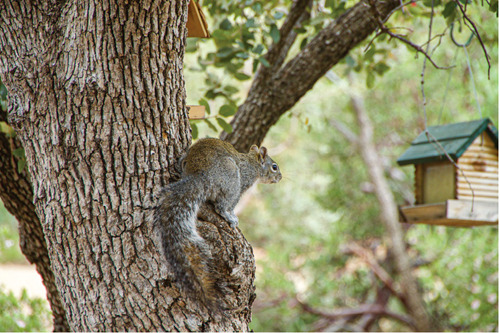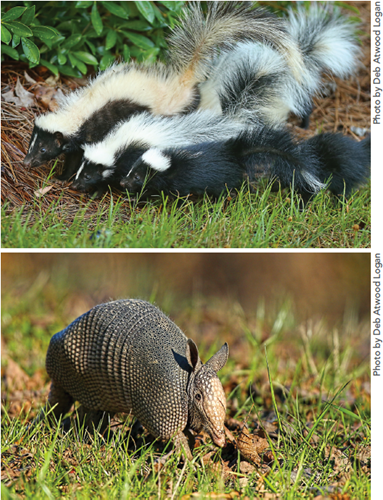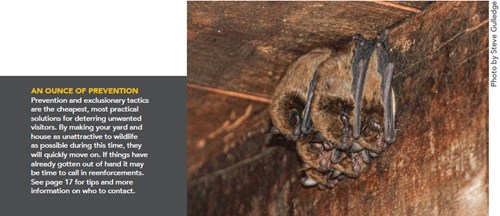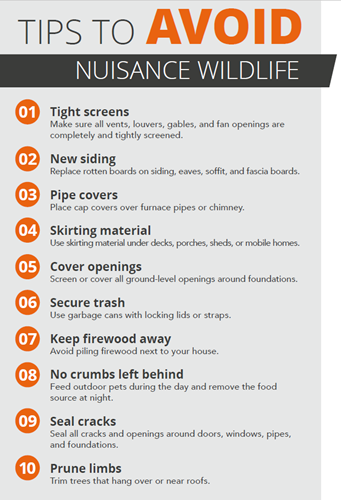Rowdy House Guests
9/15/2020 8:18:29 AM
By Ricky Flynt

Attracting native wildlife to within view of the comfort of home is a popular hobby of many landowners across the United States. Common attractants used are bird feeders, corn cobs stuck to nails, feeding troughs and spin-cast feeders, special plantings of mast-producing trees and fruit trees, and even plantings of bright wildflowers. Success is often defined by not having to leave the confines of the easy chair to see wildlife as they partake of the provisions offered by our backyard or porch. Americans spend a lot of time and money to bring wildlife closer to home so that we can watch their daily antics from the living room window. According to a 2018 survey by the United States Fish and Wildlife Service (USFWS), more than 59 million feed wildlife around their homes and spend more than $4 billion a year on birdseed alone.
These are invited guests, welcome to come and go as they please. They provide enjoyment, educational experiences, and appreciation of nature for adults and children alike. But, what if they are not invited? What if they push the boundaries of our comfort zone? What if we were not purposefully attracting wildlife in the first place? Often the wildlife we attract to our homes and properties is not intentional.

For instance, suppose a raccoon is cruising new territory when suddenly he is attracted to the aroma of beef, chicken, and lamb. He follows his nose to the back porch of a home where he finds the source: a dog’s food bowl just outside the sliding glass door. It starts as an occasional appearance but soon becomes a regular occurrence. Everyone in the family, except the dog, is entertained by watching the masked bandit scarf down the food on the back porch, separated only by the safety of the plate glass. As time goes by, the raccoon becomes more comfortable with the surroundings. It becomes difficult for the dog to compete for his share of dinner, so his food is moved inside the house. Then it becomes comical as the masked bandit and the dog go nose to nose at the glass door. The raccoon is unaffected by the continuous barking. There now is definitely a problem. The raccoon has become accustomed to this food source and likely also has invited a few of his family and friends to the banquet table. Next, this troop of raccoons is tearing off the siding of the house, ripping apart outdoor furniture, tipping over garbage cans, flipping over potted plants, and scratching at the door, all while the dog objects with non-stop barking. The aggravated homeowner cracks the door, stomps, yells, and screams. Surely the raccoons will recognize the superior predators and retreat to the wilderness. Amazingly, it doesn’t work. In fact, the raccoons strike offensive posture, growl, hiss, and stomp back at us.

Now the raccoon suddenly is not as cute and fuzzy as he was a few weeks ago. Soon, this scenario plays out during the day as well as the night, posing a threat to family safety. What seemed so entertaining at the start has become a serious situation. Who is at fault? How do you solve the problem? The controversy begins.
Sometimes wildlife can become a nuisance around homes without being invited. Homes are intentionally designed and constructed to restrict pests and wildlife from taking up residence “rent-free.” Deterrents include dryer vent covers, attic vents, gable vents, chimney covers, and seals around the doors and windows. Neglect of home maintenance can be an open invitation. For example, squirrels can enter an attic from just about any vent, pipe, or gable if it is not properly maintained.
Many of the structures we build around our homes, such as aboveground decks and porches, goldfish ponds, water fountains, workshops, storage buildings, playhouses, boathouses, and water well sheds, are also attractive to wildlife. Potential intruders include many species of birds, raccoons, skunks, opossums, snakes, bats, flying squirrels, and armadillos. The bottom line is that many structures actually attract wildlife by providing some needed component of their habitat. After all, society is spreading residential and commercial development further into the wildlife’s terrain.

Wildlife often seek to occupy our homes because they provide safety, refuge, denning, and nesting locations. An attic can provide a warm, dry location with plenty of insulation to make a den for raccoons and squirrels. Rat snakes also frequent attics, where there are adequate supplies of mice and rats. A good sign of snake activity is numerous shed snake skins in the attic; however, this does not necessarily mean there are multiple snakes. One snake can shed several times in a season depending upon food sources. Chimneys, of course, are a favorite for chimney swifts, but also raccoons and barn owls. Basements underpinned areas of mobile homes, and conventional home foundations make popular areas for skunks. They can damage ductwork and insulation, not to mention create odor problems. Armadillos burrow under concrete slabs and driveways, damaging lawns as they dig for grubs and worms in the topsoil of healthy sod. Bats will roost in any opening that leads to an unoccupied room, attic, or building, which can cause health concerns because of their droppings, not to mention bats can carry rabies. Geese around residential areas are also a big problem. They feed on lush lawns, which produces another problem … droppings. What can you do to avoid nuisance wildlife problems? A study at Purdue University reported that 19% of those who report nuisance wildlife problems feed their pets outside. Also, 46% reported that they actively feed wildlife in the vicinity of their home.
Attracting wildlife to the backyard is important to many people. Sharing about our backyard companions can be a source of pride. But wildlife can quickly wear out their welcome when they get too close to home, no matter whether actions are provoked or not.

There are sources of information available to help when your home has been invaded and you do not know how to evict the perpetrator. The Wildlife Services branch of the United States Department of Agriculture (USDA) offers technical guidance dealing with wildlife damage in rural and urban situations. The USDA Wildlife Services Mississippi office is located at Mississippi State University. Contact it at (662) 325-3014 or visit the website at www.aphis.usda.gov. Also, USDA/APHIS has partnered with Purdue University to develop a wildlife conflicts information hotline. Representatives provide technical guidance and other information dealing mostly with urban and suburban problems. Call (877) 463-6367 or visit http://wildlifehotline. info/. You also can contact Mississippi Department of Wildlife, Fisheries, and Parks (MDWFP) at (601) 432-2199 for a list of contacts across the state who are permitted to provide wildlife control services in Mississippi.
Keep in mind that there are laws, regulations, and seasons that can restrict your options or plan of action. There are also many species that have federal protection, including endangered or threatened species, all birds of prey, and migratory birds. For more information, call any of the previously mentioned contacts.
Ricky Flynt is the Alligator/Furbearer/Nuisance Wildlife Coordinator for MDWFP.









